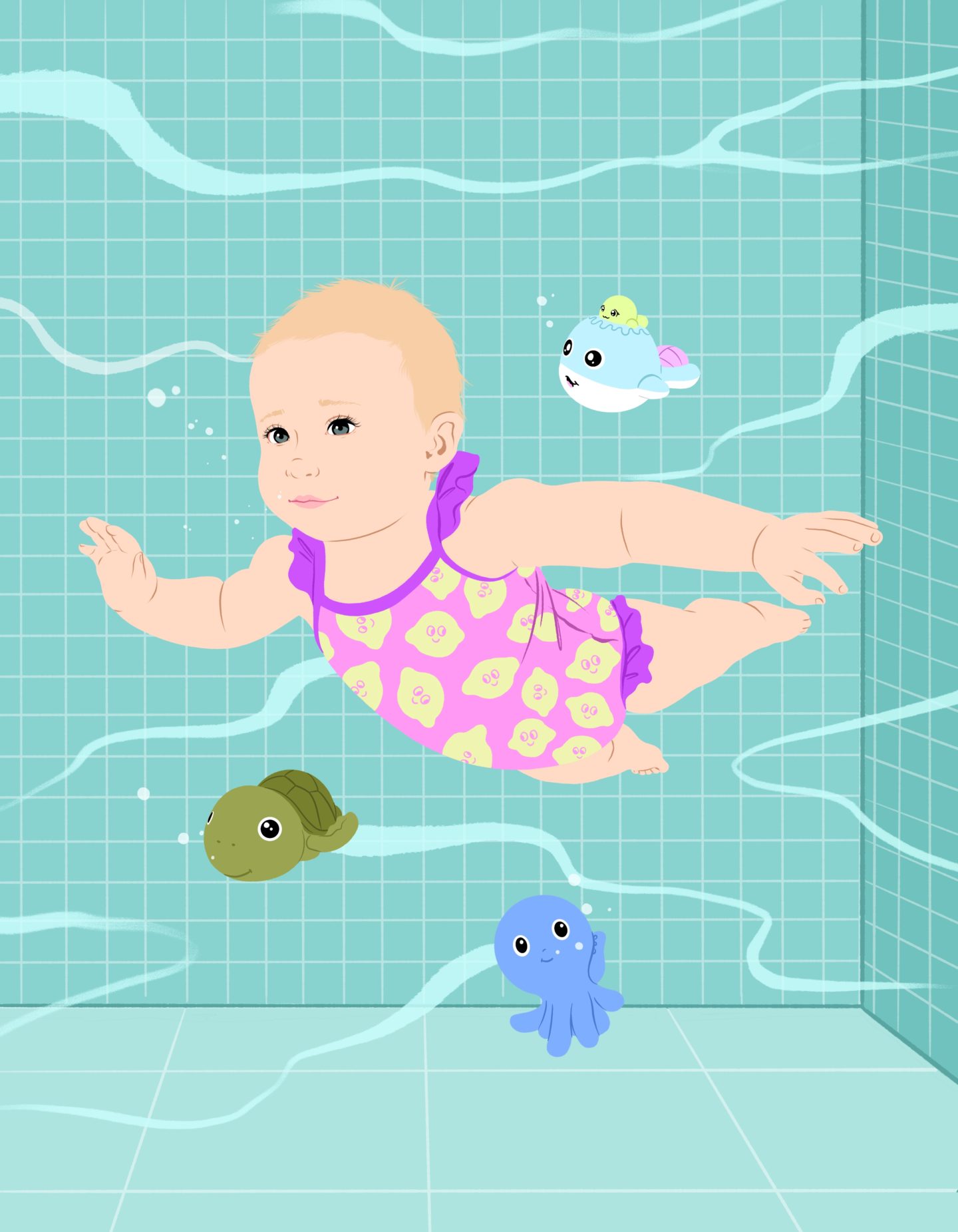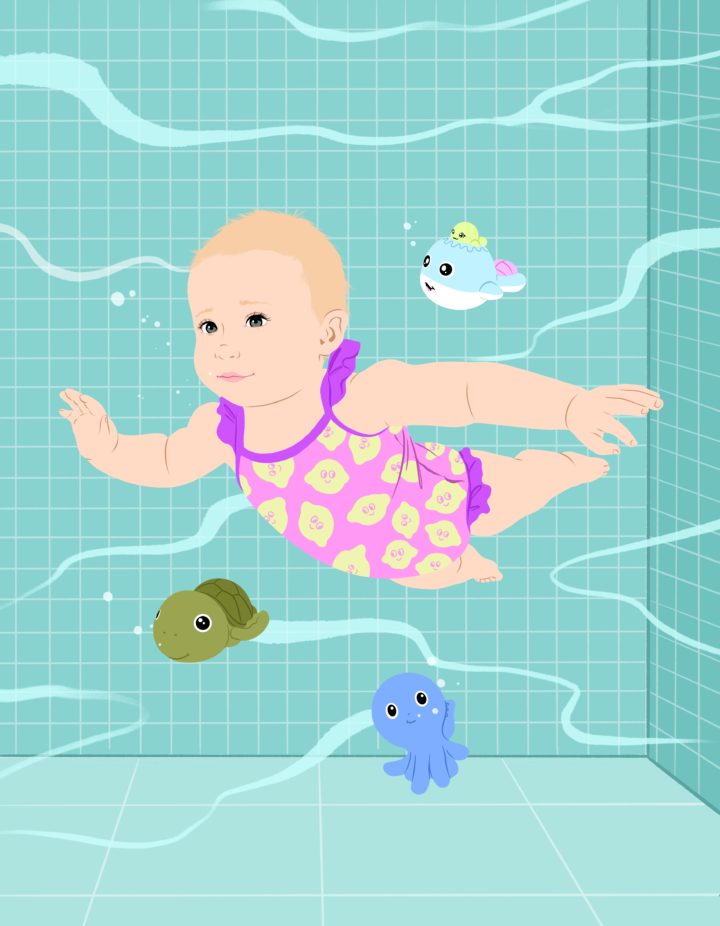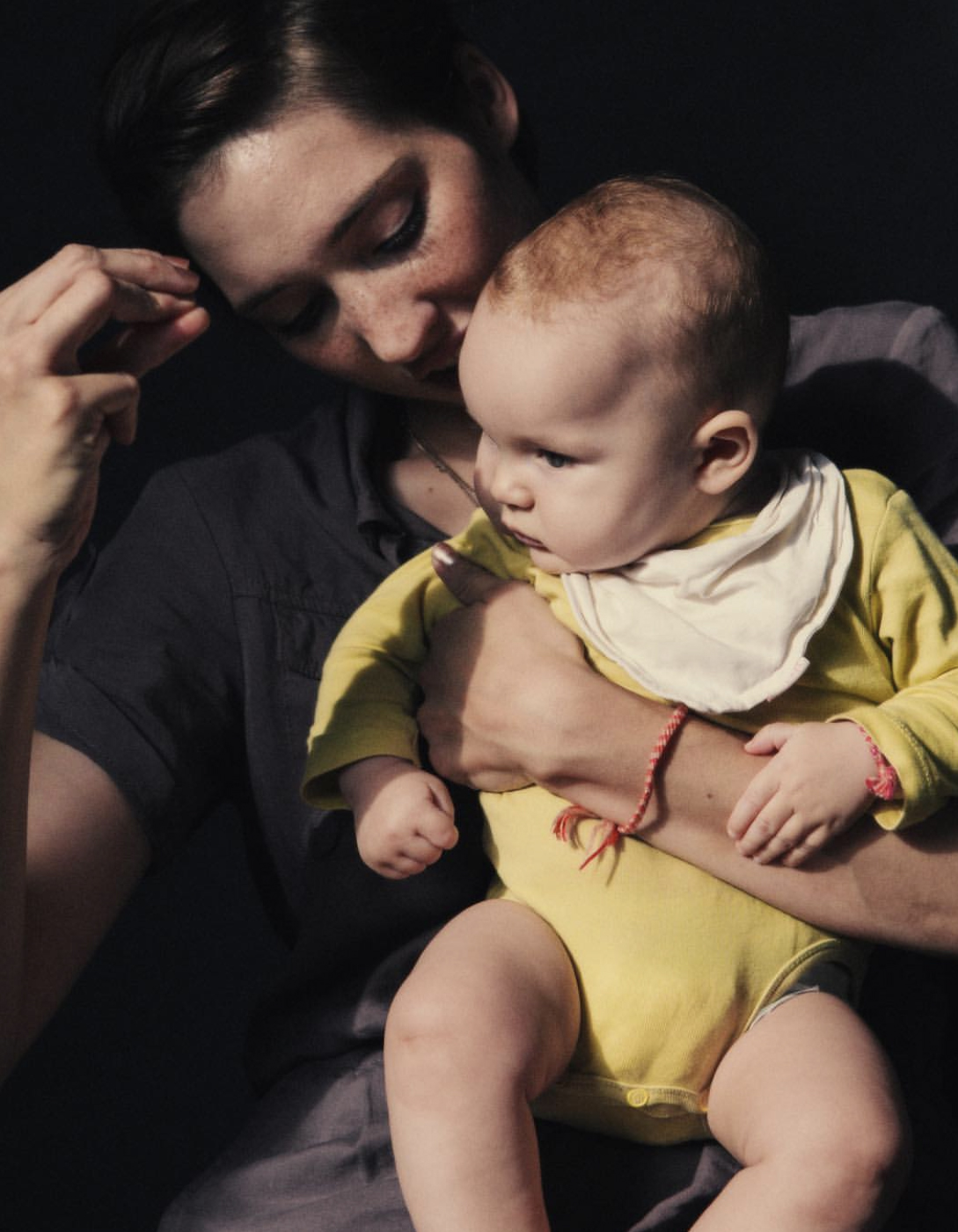When it comes to enjoying the summer with a new babe, there are so many questions. Can I take them into the pool? Can they wear sunscreen? Can I even take them outside? The list goes on. So, in an effort to ease your high summer worries, we did the work for you and took on a variety of common summer safety questions so that you can ready you AND your baby for some fun in the sun.
Can I bring my babe into a pool?
“For newborns younger than 2 months we really worry about immunity – how vulnerable babies are to illness – so I recommend that parents not take their young infants into swimming pools, lakes, the ocean, and so on,” says Howard Reinstein, pediatrician and a spokesperson for the American Academy of Pediatrics (AAP) told BabyCenter.
Also remember that your babe has more skin relative to their weight, which means their body temperature can change quickly. Because your babe can’t regulate his body temperature until their about one year, make sure the water’s warm enough.
OK, so what’s the ideal temp?
“If the water feels chilly to you, it will be really cold for your baby,” Dr. Reinstein told Babycenter. “For your baby to be comfortable, the temperature of pool water should be between 85 and 87 degrees Fahrenheit. If he starts shivering, it’s time to get out.”
On the flip side, it can also be dangerous if the water is too hot. Hot tubs, spas, and pools heated to more than 100 degrees Fahrenheit are a no-no to kids younger than 3. They overheat quicker than adults do, and high temps in the ‘cuzzi can cause a child’s heart to race or pose other dangers.
Can I put them in one of those floaty things and sip my margarita poolside?
The AAP recommends “touch supervision,” meaning that an adult stays within arm’s reach of an infant or toddler at all times whenever a child is in or near a body of water. So repeat after us: always hold your baby in the pool, and don’t go too deep where you can’t swim. Once your child learns to walk, teach them that they can’t run when they’re near a pool. And sorry, mama but don’t rely on those inflatable toys (aka water wings) to keep your babe safe from drowning, but DO have your child wear a personal flotation device (PFD) that fits properly and is approved by the U.S. Coast Guard. He should wear the PFD at all times in and around water.
What about sunscreen?
The FDA and the American Academy of Pediatrics (AAP) both recommend keeping newborns and babies younger than six months out of direct sunlight. The best sun protection for them is shade. Look for natural shade, such as under a tree. Or create your own shade under a beach umbrella, a pop-up tent, or a stroller canopy.
But like, isn’t sunblock better than a burn?
Yes. If catching a few rays is inevitable, apply small amounts of sunscreen to any exposed areas, like baby’s face, hands, neck and ears. Test sunscreen on a small section of baby’s skin and watch for a reaction if you’re trying it for the first time. Apply 15 to 30 minutes before going outside and reapply every one and a half to two hours. A zinc oxide-based sunscreen is the best type of sun block for babies as zinc is a mineral blocker that works by sitting on top of the skin to form a protective barrier against the sun, rather than seeping into pores. Also remember that the bigger the number, the better the protection. More is More so slather on that 50 and enjoy the summer!




